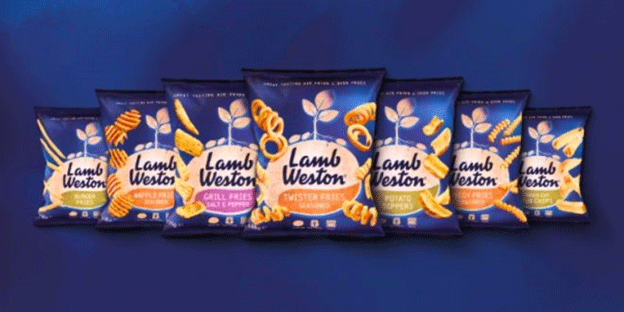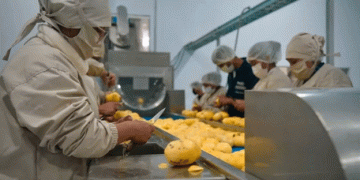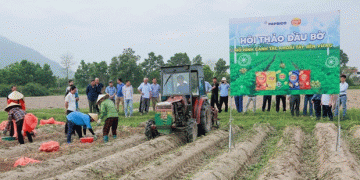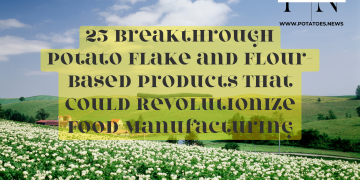As sustainability becomes a key driver in the agriculture and food industries, leading companies are exploring innovative ways to minimize their environmental footprint. One such groundbreaking initiative comes from the collaboration between Lamb Weston and SABIC, who have developed a closed-loop packaging solution made from used cooking oil (UCO). This eco-friendly packaging is designed for Lamb Weston’s pre-fried frozen potato products and is a significant step toward a more circular economy.
A Closed-Loop Packaging Solution
At the heart of this innovation is the use of leftover cooking oil from Lamb Weston’s manufacturing facilities, which is transformed into bio-feedstock. This bio-feedstock is then processed into SUPEER mLLDPE (metallocene linear low-density polyethylene) and SABIC HDPE (high-density polyethylene), which are certified bio-renewable polymers. These polymers make up at least 60% of the final packaging, creating a more sustainable alternative to conventional plastic packaging.
The new packaging, produced by Oerlemans Plastics, part of OPACKGROUP, utilizes multi-layer PE film made from these bio-renewable materials. This solution not only supports Lamb Weston’s sustainability goals but also addresses consumer demand for environmentally friendly packaging.
Reducing Carbon Footprint and Waste
This closed-loop project achieves a 30% reduction in carbon footprint compared to previous packaging solutions. Several factors contribute to this impressive reduction:
- The new packaging is 20% thinner, resulting in lighter bags that weigh just 10 grams per unit.
- The use of bio-renewable polymers ensures that the materials have a significantly lower environmental impact.
- The production process aligns with International Sustainability & Carbon Certification (ISCC) PLUS standards, which help trace the renewable content in materials through a mass-balancing system.
According to Sebastiaan Besems, VP Commercial EMEA at Lamb Weston, the company is committed to reducing food waste by 50%, cutting its overall carbon footprint by 25%, and transitioning to circular production by 2030. The new packaging is a key part of these ambitious sustainability goals, and the use of bio-renewable SABIC polymers helps the company stay ahead of the curve in meeting consumer and regulatory expectations.
Performance and Compliance
Beyond its sustainability benefits, the new packaging meets all necessary food safety regulations set by the U.S. FDA and European Food Safety Authority (EFSA). The SUPEER mLLDPE resin used in the packaging ensures strong bag seals, while the SABIC HDPE resin provides both strength and flexibility, making it ideal for the frozen food market.
The packaging’s durability, flexibility, and food safety compliance make it a high-performing solution for both consumers and retailers. Its lighter weight reduces shipping costs and energy consumption, further enhancing its environmental benefits.
Circularity in Action
Khaled Al-Jalawi, Global Director of Circular Economy Business at SABIC, emphasized the importance of circularity in this project:
“This project demonstrates the concept of circularity by utilizing used cooking oil to produce circular polymers designed for recyclability. It’s a closed-loop approach that maximizes resource efficiency.”
The partnership between Lamb Weston and SABIC exemplifies how companies can work together to address the growing demand for sustainable food packaging. By turning a waste product, such as cooking oil, into a valuable raw material, they not only reduce waste but also create a scalable model for other companies to follow.
The collaboration between Lamb Weston, SABIC, and Oerlemans Plastics represents a significant advancement in sustainable packaging solutions. By transforming used cooking oil into bio-feedstock for flexible packaging, this closed-loop approach reduces the carbon footprint, enhances circularity, and offers a more environmentally friendly alternative for the frozen food industry. As consumer awareness and demand for sustainable products continue to rise, innovations like this set a new benchmark for packaging within the food supply chain.






